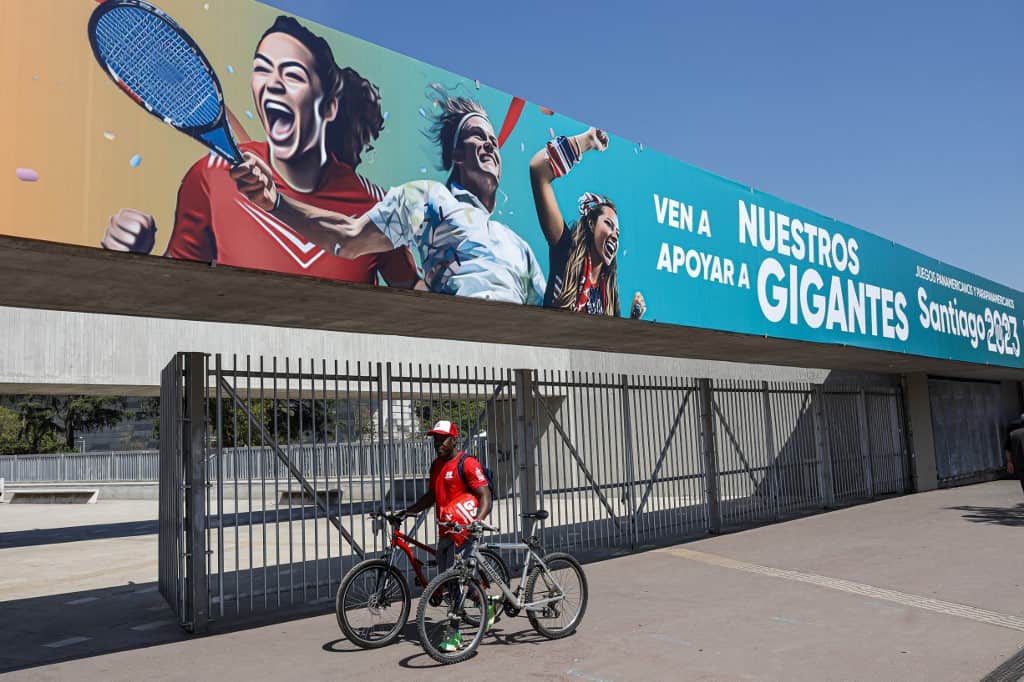For the Brazilian gymnast Rebeca Andrade and her American counterpart Jordan Chiles, the Dominican athlete Marileidy Paulino and the Canadian swimmer Maggie Mac Neil, stars of the Pan American sport, the first Olympic Games with female participation, in Amsterdam-1928, remain too far away.
Prior to the event in that European city, women were prohibited, they could only be spectators. A century later, international multi-sport events, such as the Santiago-2023 Pan American Games, are a showcase of the path traveled.
Many of them arrive in the Chilean capital loaded with honors. Andrade has just been crowned world champion in vaulting, overcoming none other than the American Simone Biles, friend of Chiles, Olympic silver and world gold. Paulino will also be there with her reign in the 400m and Mac Neil, a three-time Olympic medalist.
The United States, winner of 16 of the 18 Pan American events, comes to Santiago with a ‘Team’ of 631 athletes, of which 318 are women and 313 men.
Brazil, another powerful Pan American delegation, will be led by Olympic champion Rebeca Andrade, called to be one of the great stars in Santiago, among a total delegation of 630 compatriots, 45% women.
And there are many more, like the legendary Argentine Leonas hockey team, who climbed the podium at the Olympic Games on five occasions, with three silver medals and two bronze, and won the Pan American Games seven times.
In the previous edition of the continental event, in Lima-2019, 3,480 men and 2,972 women participated, 54% and 46%, respectively.
From Santiago to Paris, nonstop
The great attraction of the Santiago Pan American Games is that for the first time there will be 21 sports, out of the 40 in total, that grant direct qualification to Paris-2024.
Classic disciplines such as handball, boxing, tennis, shooting, sailing and hockey do not need intermediate stops between Santiago and Paris, a very important opportunity on the steep path to the Olympic Games.
Modalities with little mileage in the Olympic program, such as breaking, climbing and skateboarding will make their debut at the Pan American Games, all three also with a direct itinerary between the Chilean and French capitals.
In turn, athletics, swimming, cycling and weightlifting are among 12 sports with qualifying marks and that award points for the Olympic ranking. Many opportunities for a very challenging Pan American Games.
Nothing will change
Except for the first Pan American Games, in Buenos Aires in 1951, and in Havana in 1991, where the hosts prevailed, the United States swept the remaining sixteen editions. There is no way history will change in 2023.
Without its top teams, still ‘Team USA’ will come to Santiago with 32 Olympic medalists, including gymnast Chiles and swimmer Brooks Curry.
“These Games not only unite our region to celebrate sport, but also provide a vital pathway for many athletes to qualify for the Paris 2024 Olympic Games,” said the director of the United States Olympic and Paralympic Committee (USOPC), Sarah Hirshland.
In the historical standings after 18 editions of the Pan American Games, the United States has accumulated 2,066 gold medals, distantly followed by Cuba with 908 golden medals, but this historical performance by the Caribbean island stands out with just 11.2 million inhabitants.
Although it has fallen in recent Pan American events and no improvement is expected in Santiago, Cuba surpasses in the historical ranking by far continental powers such as Canada (third with 491 golds), Brazil (fourth, 383), Argentina (fifth, 327) ) and Mexico (sixth, 258).
For what it was created
The site where half a century ago torture and humiliation reigned supreme, in a few days will become the main sports arena of the Santiago Pan American Games, in a 64-hectare complex with facilities to host several disciplines.
After the 1973 coup d’etat, Augusto Pinochet’s dictatorship transformed the National Stadium into a detention and torture center for hundreds of political opponents.
Three decades later, in 2003, that building was declared a national historic monument and 20 years later it will receive in the various remodeled facilities of the complex a large part of the 7,000 athletes from 41 countries who will attend the nineteenth edition of the Pan American Games.
The budget for the continental event is around $650 million and in addition to the renovation of the National Stadium and other venues includes the construction of the Pan American Village, with more than 1,300 apartments that after the games will be used for social housing.






